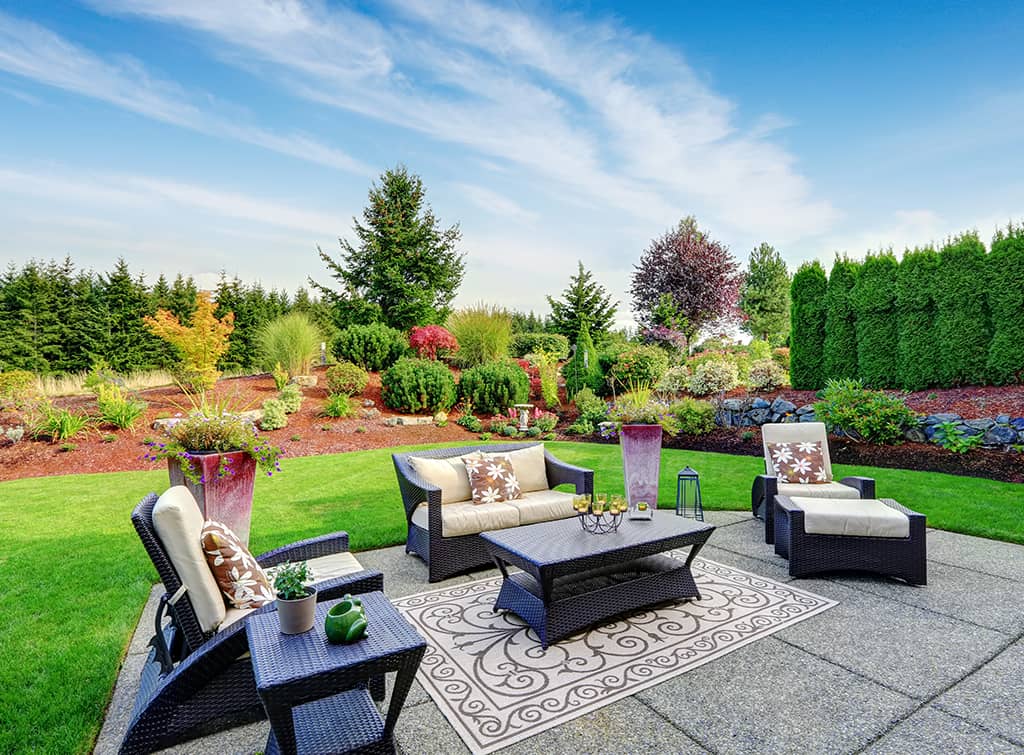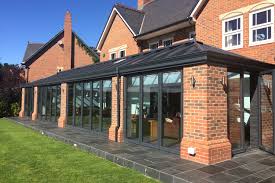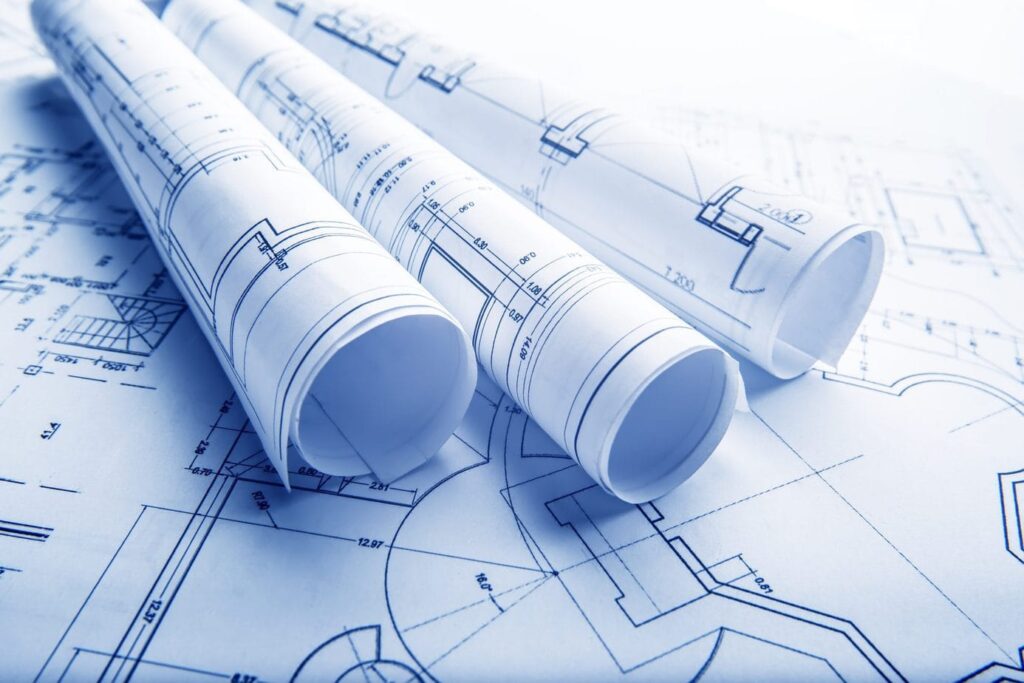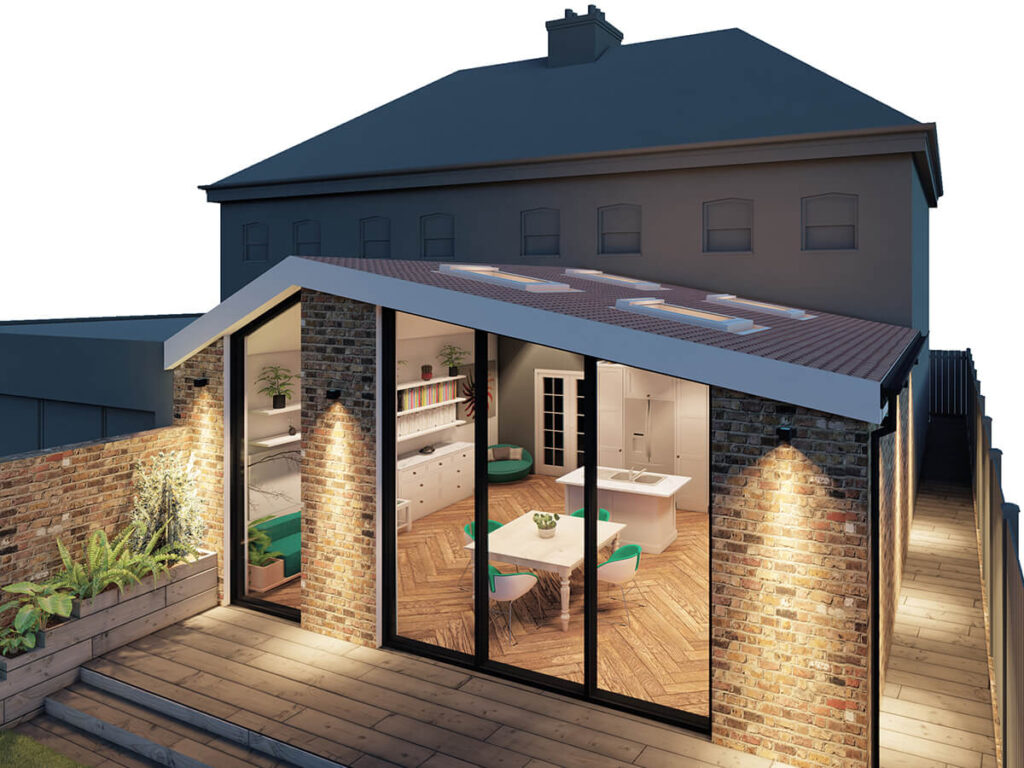
The Ultimate Guide to Patios in Tamworth: Answers to Your Most Pressing Questions
What are the most common patio materials used in Tamworth?
When it comes to patio materials in Tamworth, homeowners have a variety of options to choose from. The most popular choices include:
- Concrete: Durable, low-maintenance, and cost-effective, concrete is a popular choice for patios in Tamworth. It can be stamped, coloured, or textured to achieve a desired aesthetic.
- Brick: Brick patios offer a classic, timeless look and are known for their durability. They can be laid in various patterns to create a unique and visually appealing design.
- Natural Stone: Flagstone, limestone, and sandstone are popular natural stone options for patios in Tamworth. These materials offer a natural, rustic look and can be pretty durable.
- Pavers: Interlocking concrete or stone pavers are versatile in various colours, shapes, and textures. They are easy to install and maintain.
- Composite Decking: While not technically a patio material, composite decking is becoming increasingly popular for outdoor living spaces in Tamworth. It offers a low-maintenance, durable alternative to traditional wood decking.
The choice of patio material will depend on budget, desired aesthetic, and the level of maintenance the homeowner is willing to undertake.
What are the typical patio sizes in Tamworth?
The typical patio size in Tamworth can vary depending on the size of the property and the homeowner’s needs. However, some standard patio sizes include:
- Small Patios: These are ideal for smaller backyards or courtyards. They range from 100 to 300 square feet and can accommodate a small seating area or dining set.
- Medium Patios: Measuring between 300 and 600 square feet, these patios provide ample space for entertaining, outdoor dining, and relaxation.
- Large Patios: These expansive patios, which exceed 600 square feet, are often found in more significant properties. They can accommodate multiple seating areas, outdoor kitchens, and water features.
When determining the ideal patio size for a Tamworth property, the outdoor space’s overall size, the patio’s intended use, and any local planning regulations must be considered.
What are the most popular patio design trends in Tamworth?
Patio design trends in Tamworth are constantly evolving, but some of the most popular styles and features include:
- Minimalist and Contemporary Designs: Clean lines, neutral colour palettes, and materials like concrete, stone, and metal are becoming increasingly popular in Tamworth.
- Outdoor Kitchens and Dining Areas: Homeowners in Tamworth are embracing outdoor living and incorporating built-in grills, pizza ovens, and dining areas into their patio designs.
- Integrated Seating: Incorporating built-in benches, retaining walls, or custom-designed seating into the patio design is a popular way to maximize the available space.
- Shade Structures: Pergolas, shade sails, and retractable awnings provide shade and create a more comfortable outdoor living space.
- Landscaping and Water Features: Incorporating lush greenery, flowering plants, and water features like fountains or small ponds can add a touch of natural beauty to the patio.
- Lighting and Ambiance: Strategically placed lighting, such as string lights, path lighting, and accent lighting, can transform a patio into a cosy and inviting space for evening gatherings.
These design trends reflect the desire of Tamworth homeowners to create functional, visually appealing, and comfortable outdoor living spaces that can be enjoyed year-round.
What are the typical patio installation costs in Tamworth?
The cost of patio installation in Tamworth can vary widely depending on several factors, including:
- Patio Size: Larger patios will generally cost more to install than smaller ones, as they require more materials and labour.
- Patio Material: The choice of patio material can significantly impact the overall cost. Concrete and pavers are typically more affordable than natural stone or composite decking.
- Site Preparation: The amount of site preparation required, such as excavation, levelling, and drainage, can add to the overall cost.
- Additional Features: Incorporating outdoor kitchens, water features, or custom seating can increase the installation costs.
- Labour Costs: The cost of labour, which includes the installation crew and any specialized tradespeople, can vary depending on the complexity of the project and the local market rates.
As a general guideline, the average cost of patio installation in Tamworth can range from £50 to £150 per square meter, depending on the abovementioned factors. It’s always best to obtain multiple quotes from reputable local contractors to get a more accurate estimate for your project.
What are the most common patio maintenance tasks in Tamworth?
Maintaining a patio in Tamworth is essential to ensure its longevity and aesthetic appeal. Some of the most common patio maintenance tasks include:
- Cleaning: Regular cleaning, using a pressure washer or a mild detergent solution, can help remove dirt, debris, and stains from the patio surface.
- Sealing: Applying a sealant to concrete, brick, or paver patios can help protect the surface from weathering, staining, and cracking.
- Weed and Moss Removal: Regularly removing weeds and moss that may grow between patio pavers or on the surface can help maintain a tidy and well-kept appearance.
- Joint Repair: Repairing any cracks or gaps between patio pavers or stones can help prevent further damage and maintain the structural integrity of the patio.
- Resurfacing: Patio surfaces may become worn or discoloured over time. Resurfacing the patio with a new material layer can restore its appearance and extend its lifespan.
- Drainage Maintenance: Ensuring proper drainage around the patio is essential to prevent water pooling and potential damage to the surface.
- Furniture and Accessory Maintenance: Cleaning and maintaining patio furniture and any accessories like umbrellas or lighting can help keep the entire outdoor living space looking its best.
By staying on top of these maintenance tasks, Tamworth homeowners can ensure their patio remains in excellent condition for years.
What are the most common patio design mistakes to avoid in Tamworth?
When designing and installing a patio in Tamworth, it’s essential to be aware of common mistakes that can compromise the outdoor living space’s functionality, aesthetics, and longevity. Some of the most common patio design mistakes to avoid include:
- Inadequate Drainage: Failure to properly address drainage issues can lead to water pooling, which can damage the patio surface and surrounding areas.
- Improper Patio Sizing: Choosing a patio size that is either too small or too large for the available outdoor space can result in an awkward or underutilized area.
- Lack of Shade and Seating: Not incorporating shade structures or comfortable seating options can make the patio less inviting and usable during certain times of the day or year.
- Poor Material Selection: Choosing patio materials unsuitable for the local climate or intended use can lead to premature wear and tear.
- Neglecting Accessibility: Failing to consider accessibility features, such as level transitions and wheelchair-friendly surfaces, can make the patio less inclusive and user-friendly.
- Insufficient Lighting: Overlooking the importance of strategic lighting can limit the patio’s usability and ambience, especially during the evening hours.
- Lack of Cohesive Design: Not integrating the patio design with the property’s overall landscape and architectural style can result in a disjointed and visually unappealing outdoor space.
By being mindful of these common patio design mistakes, Tamworth homeowners can create a functional, visually appealing, and long-lasting outdoor living space that meets their needs and enhances the overall property.
What are the benefits of hiring a professional patio installer in Tamworth?
Regarding patio installation in Tamworth, hiring a professional can offer numerous benefits over a DIY approach. Some of the key advantages include:
- Expertise and Experience: Professional patio installers in Tamworth have the necessary skills, knowledge, and experience to ensure the project is completed to a high standard, avoiding common mistakes and ensuring the patio’s longevity.
- Proper Planning and Design: Experienced installers can help homeowners with the planning and design process, ensuring the patio layout, materials, and features are tailored to the specific needs and preferences of the property.
- Efficient Installation: Professional installers have the right tools, equipment, and manpower to complete the patio installation in a timely and efficient manner, minimizing disruption to the homeowner.
- Compliance with Local Regulations: Reputable patio installers in Tamworth are familiar with local building codes, planning regulations, and any necessary permits, ensuring the project is completed in compliance with all relevant requirements.
- Warranty and Aftercare: Many professional patio installers offer warranties on their work, providing homeowners with peace of mind and a point of contact for any future maintenance or repair needs.
- Access to Quality Materials: Professional installers often have access to high-quality patio materials and can guide the best options for the specific project and location.
- Increased Property Value: A well-designed and professionally installed patio can significantly enhance the overall value of a Tamworth property, making it a worthwhile investment.
By hiring a reputable and experienced patio installer in Tamworth, homeowners can ensure their outdoor living space is built to last, meets their needs, and adds to their property’s overall appeal and value.
What are the most common patio design trends in Tamworth?
Patio design trends in Tamworth are constantly evolving, but some of the most popular styles and features include:
- Minimalist and Contemporary Designs: Clean lines, neutral colour palettes, and materials like concrete, stone, and metal are becoming increasingly popular in Tamworth.
- Outdoor Kitchens and Dining Areas: Homeowners in Tamworth are embracing outdoor living and incorporating built-in grills, pizza ovens, and dining areas into their patio designs.
- Integrated Seating: Incorporating built-in benches, retaining walls, or custom-designed seating into the patio design is a popular way to maximize the available space.
- Shade Structures: Pergolas, shade sails, and retractable awnings provide shade and create a more comfortable outdoor living space.
- Landscaping and Water Features: Incorporating lush greenery, flowering plants, and water features like fountains or small ponds can add a touch of natural beauty to the patio.
- Lighting and Ambiance: Strategically placed lighting, such as string lights, path lighting, and accent lighting, can transform a patio into a cosy and inviting space for evening gatherings.
These design trends reflect the desire of Tamworth homeowners to create functional, visually appealing, and comfortable outdoor living spaces that can be enjoyed year-round.
What are the most common patio materials used in Tamworth?
When it comes to patio materials in Tamworth, homeowners have a variety of options to choose from. The most popular choices include:
- Concrete: Durable, low-maintenance, and cost-effective, concrete is a popular choice for patios in Tamworth. It can be stamped, coloured, or textured to achieve a desired aesthetic.
- Brick: Brick patios offer a classic, timeless look and are known for their durability. They can be laid in various patterns to create a unique and visually appealing design.
- Natural Stone: Flagstone, limestone, and sandstone are popular natural stone options for patios in Tamworth. These materials offer a natural, rustic look and can be pretty durable.
- Pavers: Interlocking concrete or stone pavers are versatile in various shapes and textures. They are easy to install and maintain.
- Composite Decking: While not technically a patio material, composite decking is becoming increasingly popular for outdoor living spaces in Tamworth. It offers a low-maintenance, durable alternative to traditional wood decking.
The choice of patio material will depend on budget, desired aesthetic, and the level of maintenance the homeowner is willing to undertake.
What are the typical patio sizes in Tamworth?
The typical patio size in Tamworth can vary depending on the size of the property and the homeowner’s needs. However, some standard patio sizes include:
- Small Patios: These are ideal for smaller backyards or courtyards. They range from 100 to 300 square feet and can accommodate a small seating area or dining set.
- Medium Patios: Measuring between 300 and 600 square feet, these patios provide ample space for entertaining, outdoor dining, and relaxation.
- Large Patios: These expansive patios, which exceed 600 square feet, are often found in larger properties. They can accommodate multiple seating areas, outdoor kitchens, and even water features.
When determining the ideal patio size for a Tamworth property, the outdoor space’s overall size, the patio’s intended use, and any local planning regulations must be considered.
What are the typical patio installation costs in Tamworth?
The cost of patio installation in Tamworth can vary widely depending on several factors, including:
- Patio Size: Larger patios will generally cost more to install than smaller ones, as they require more materials and labour.
- Patio Material: The choice of patio material can significantly impact the overall cost. Concrete and pavers are typically more affordable than natural stone or composite decking.
- Site Preparation: The amount of site preparation required, such as excavation, levelling, and drainage, can add to the overall cost.
- Additional Features: Incorporating outdoor kitchens, water features, or custom seating can increase the installation costs.
- Labour Costs: The cost of labour, which includes the installation crew and any specialized tradespeople, can vary depending on the complexity of the project and the local market rates.
As a general guideline, the average cost of patio installation in Tamworth can range from £50 to £150 per square meter, depending on the abovementioned factors. It’s always best to obtain multiple quotes from reputable local contractors to get a more accurate estimate for your project.
What are the most common patio maintenance tasks in Tamworth?
Maintaining a patio in Tamworth is essential to ensure its longevity and aesthetic appeal. Some of the most common patio maintenance tasks include:
- Cleaning: Regular cleaning, using a pressure washer or a mild detergent solution, can help remove dirt, debris, and stains from the patio surface.
- Sealing: Applying a sealant to concrete, brick, or paver patios can help protect the surface from weathering, staining, and cracking.
- Weed and Moss Removal: Regularly removing weeds and moss that may grow between patio pavers or on the surface can help maintain a tidy and well-kept appearance.
- Joint Repair: Repairing any cracks or gaps between patio pavers or stones can help prevent further damage and maintain the structural integrity of the patio.
- Resurfacing: Patio surfaces may become worn or discoloured over time. Resurfacing the patio with a new layer of material can restore its appearance and extend its lifespan.
- Drainage Maintenance: Ensuring proper drainage around the patio is essential to prevent water pooling and potential damage to the surface.
- Furniture and Accessory Maintenance: Cleaning and maintaining patio furniture and any accessories like umbrellas or lighting can help keep the entire outdoor living space looking its best.
By staying on top of these maintenance tasks, Tamworth homeowners can ensure their patio remains in excellent condition for years.
What are the most common patio design mistakes to avoid in Tamworth?
When designing and installing a patio in Tamworth, it’s essential to be aware of common mistakes that can compromise the outdoor living space’s functionality, aesthetics, and longevity. Some of the most common patio design mistakes to avoid include:
- Inadequate Drainage: Failure to properly address drainage issues can lead to water pooling, which can damage the patio surface and surrounding areas.
- Improper Patio Sizing: Choosing a patio size that is either too small or too large for the available outdoor space can result in an awkward
What are the benefits of hiring a professional patio installer in Tamworth?
Regarding patio installation in Tamworth, hiring a professional can offer numerous benefits over a DIY approach. Some of the key advantages include:- Expertise and Experience: Professional patio installers in Tamworth have the necessary skills, knowledge, and experience to ensure the project is completed to a high standard, avoiding common mistakes and ensuring the patio’s longevity.
- Proper Planning and Design: Experienced installers can help homeowners with the planning and design process, ensuring the patio layout, materials, and features are tailored to the specific needs and preferences of the property.
- Efficient Installation: Professional installers have the right tools, equipment, and manpower to complete the patio installation in a timely and efficient manner, minimizing disruption to the homeowner.
- Compliance with Local Regulations: Reputable patio installers in Tamworth are familiar with local building codes, planning regulations, and any necessary permits, ensuring the project is completed in compliance with all relevant requirements.
- Warranty and Aftercare: Many professional patio installers offer warranties on their work, providing homeowners with peace of mind and a point of contact for any future maintenance or repair needs.
- Access to Quality Materials: Professional installers often have access to high-quality patio materials and can guide the best options for the specific project and location.
- Increased Property Value: A well-designed and professionally installed patio can significantly enhance the overall value of a Tamworth property, making it a worthwhile investment.
FAQ
What are the most popular patio materials in Tamworth?
The most popular patio materials in Tamworth include:- Concrete
- Brick
- Natural stone (flagstone, limestone, sandstone)
- Pavers
- Composite decking
What are the typical patio sizes in Tamworth?
The typical patio sizes in Tamworth include:- Small patios (100-300 sq ft)
- Medium patios (300-600 sq ft)
- Large patios (over 600 sq ft)
What are the most common patio design trends in Tamworth?
Some of the most common patio design trends in Tamworth include:- Minimalist and contemporary designs
- Outdoor kitchens and dining areas
- Integrated seating
- Shade structures
- Landscaping and water features
- Lighting and ambiance
What are the typical patio installation costs in Tamworth?
The typical patio installation costs in Tamworth can range from £50 to £150 per square meter, depending on factors such as:- Patio size
- Patio material
- Site preparation
- Additional features
- Labor costs
What are the most common patio maintenance tasks in Tamworth?
The most common patio maintenance tasks in Tamworth include:- Cleaning
- Sealing
- Weed and moss removal
- Joint repair
- Resurfacing
- Drainage maintenance
- Furniture and accessory maintenance
What are the most common patio design mistakes to avoid in Tamworth?
Some of the most common patio design mistakes to avoid in Tamworth include:- Inadequate drainage
- Improper patio sizing
- Lack of shade and seating
- Poor material selection
- Neglecting accessibility
- Insufficient lighting
- Lack of cohesive design
What are the benefits of hiring a professional patio installer in Tamworth?
The benefits of hiring a professional patio installer in Tamworth include:- Expertise and experience
- Proper planning and design
- Efficient installation
- Compliance with local regulations
- Warranty and aftercare
- Access to quality materials
- Increased property value
{ "@context": "https://schema.org", "@type": "FAQPage", "mainEntity": [ { "@type": "Question", "name": "What are the most popular patio materials in Tamworth?", "acceptedAnswer": { "@type": "Answer", "text": "The most popular patio materials in Tamworth include concrete, brick, natural stone, pavers, and composite decking." } }, { "@type": "Question", "name": "What are the typical patio sizes in Tamworth?", "acceptedAnswer": { "@type": "Answer", "text": "The typical patio sizes in Tamworth include small patios (100-300 sq ft), medium patios (300-600 sq ft), and large patios (over 600 sq ft)." } }, { "@type": "Question", "name": "What are the most common patio design trends in Tamworth?", "acceptedAnswer": { "@type": "Answer", "text": "Some of the most common patio design trends in Tamworth include minimalist and contemporary designs, outdoor kitchens and dining areas, integrated seating, shade structures, landscaping and water features, and lighting and ambiance." } }, { "@type": "Question", "name": "What are the typical patio installation costs in Tamworth?", "acceptedAnswer": { "@type": "Answer", "text": "The typical patio installation costs in Tamworth can range from £50 to £150 per square meter, depending on factors such as patio size, material, site preparation, additional features, and labor costs." } }, { "@type": "Question", "name": "What are the most common patio maintenance tasks in Tamworth?", "acceptedAnswer": { "@type": "Answer", "text": "The most common patio maintenance tasks in Tamworth include cleaning, sealing, weed and moss removal, joint repair, resurfacing, drainage maintenance, and furniture and accessory maintenance." } }, { "@type": "Question", "name": "What are the most common patio design mistakes to avoid in Tamworth?", "acceptedAnswer": { "@type": "Answer", "text": "Some of the most common patio design mistakes to avoid in Tamworth include inadequate drainage, improper patio sizing, lack of shade and seating, poor material selection, neglecting accessibility, insufficient lighting, and lack of cohesive design." } }, { "@type": "Question", "name": "What are the benefits of hiring a professional patio installer in Tamworth?", "acceptedAnswer": { "@type": "Answer", "text": "The benefits of hiring a professional patio installer in Tamworth include expertise and experience, proper planning and design, efficient installation, compliance with local regulations, warranty and aftercare, access to quality materials, and increased property value." } } ] }













